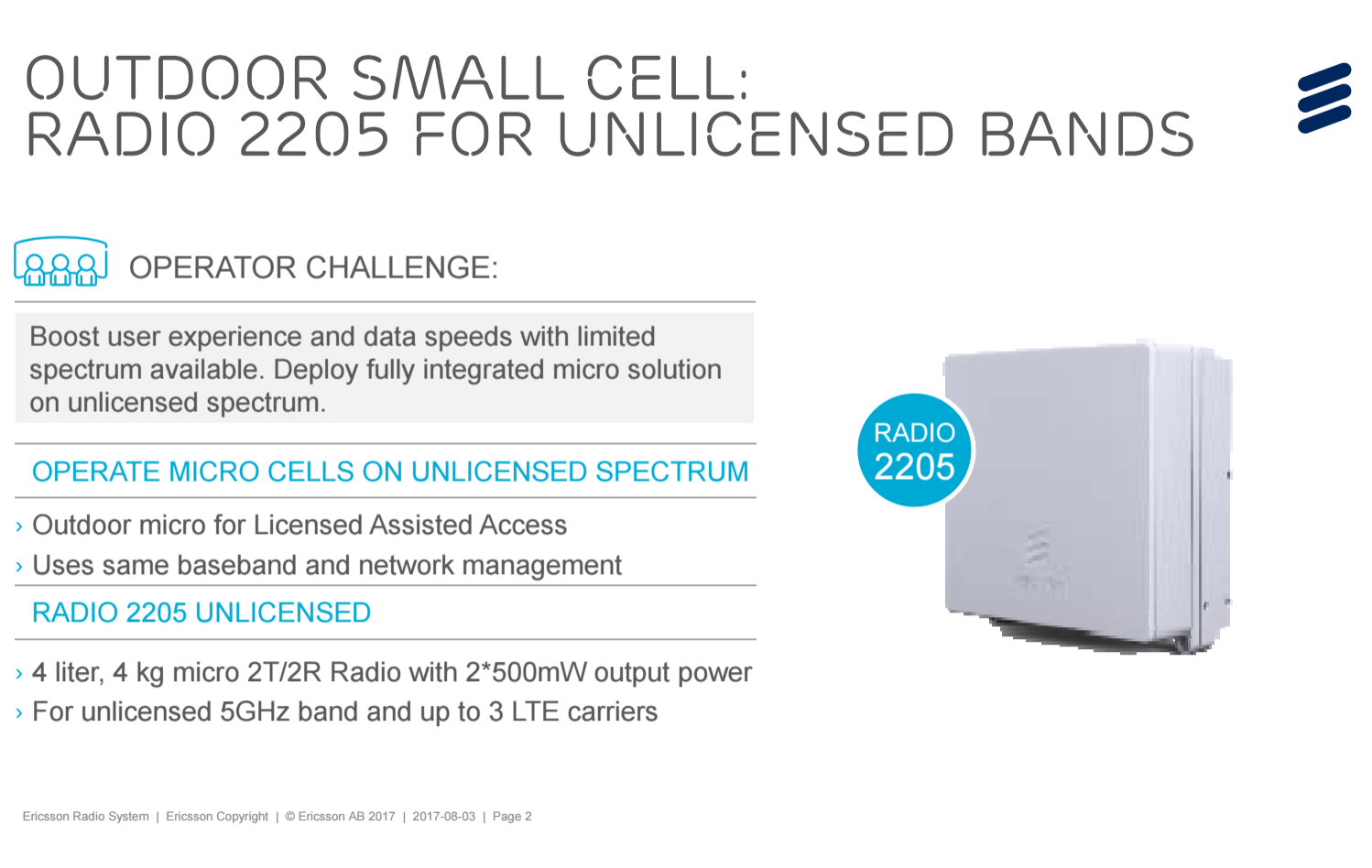Take a look at carrier trials that use LAA to push toward the theoretical limit of gigabit LTE
As LTE networks continue to evolve toward 5G, the vital role of spectrum in improving end-user throughput is more apparent than ever. Simply put, most carriers don’t have enough licensed spectrum to deliver near-gigabit-per-second speeds without tapping into unlicensed spectrum. To that end, let’s take a look at how Licensed Assisted Access–aggregating licensed and unlicensed to create a higher capacity radio channel–is playing a key role in pushing gigabit LTE to its theoretical limit.
To get up to speed (haha), here’s an overview of the technologies that comprise the late-stage LTE service–4×4 MIMO, carrier aggregation, 256 QAM, and, device support.
In June, American carriers AT&T and T-Mobile US both conducted network trials using LAA achieving respective throughputs of 750 Mbps and 741 Mbps respectively.
AT&T conducted “live LTE-LAA field trials” in downtown San Francisco, Calif., using Ericsson’s Radio 2205 in conjunction with its small cell footprint in the area. “We’re excited to be the one of the first carriers to have made our first successful LTE-LAA test and reach blazing fast speeds,” Marachel Knight, senior vice president, Wireless Network Architecture and Design, said in a statement. “As demand continues to grow at a rapid pace on our network, being able to offer customers not only fast speeds, but also increased capacity by combining licensed and unlicensed spectrum is an important milestone.”
T-Mobile US tested LAA in Los Angeles, Calif., using an 80 megahertz channel. “LAA is the just the latest example of how T-Mobile is innovating the way forward. While our competitors scramble to deal with the way unlimited data plans are slowing down their networks, we’re already moving on to what’s next,” company CTO Neville Ray said in a statement. We’ll circle back to how LAA and unlimited data plans fit together later. T-Mobile US also has brought live LTE-U, using 5 GHz spectrum, in six markets: Bellevue, Wash., Brooklyn, N.Y., Dearborn, Mich., Las Vegas, Nev., Richardson, Texas, and Simi Valley, Calif.
Earlier this week, Verizon Wireless worked with Qualcomm and Ericsson to achieve a 953 Mbps downlink through according to the results of a “commercial network deployment” conducted in Boca Raton, Fla.
It’s important to differentiate between LTE-U, a broad term, and LAA, which is one of the flavors of LTE-U, with others including LWA and MulteFire. LTE-U was detailed in 3GPP’s Release 12, while LAA was defined in Release 13. Here’s a primer, courtesy of Qualcomm, on the variations of LTE in unlicensed spectrum.
In trials in Korea earlier this year, SK Telecom aggregated one 20 megahertz LTE channel with three 20 megahertz channels in spectrum used for Wi-Fi, then applied listen-before-talk to the Wi-Fi and LTE bands to achieve 1 Gbps downlink throughput in an indoor environment. Park Jin-hyo, head of network research and development at SK Telecom, said in a statement: “The technology that we have tested is the starting point for an evolution to 5G, and SK Telecom will continue to develop the infrastructure so that users can experience 5G service as soon as possible.”
Moving to Europe, the latest development comes from Telecom Italia Mobile (TIM), which recently demoed downlink throughput of “up to 1 Gbps,” according to the carrier, on a live mobile network using LAA, which the carrier described as “particularly effective for hot spot coverage (stadiums, shopping centers, squares and parks) via small cells with low visual impact.” The plan is for limited commercialization beginning in September in Milan and Turin on the back of a new ASUS device, which sports the Qualcomm SnapDragon 835 platform with integrated X16 modem. The testing used Ericsson LAA radios.
Some of the commonalities here are Ericsson’s Radio 2205, which supports LAA, and was used in all of the aforementioned testing. That unit weighs 4 kilograms and supports 5 GHz unlicensed spectrum and up to three LTE channels.

Another is device support, which, again relies on Qualcomm’s platform and modem, which is inside the Samsung Galaxy S8, Galaxy S8+, the upcoming ASUS phone, the Motorola MotoZ2 Force Edition, the Sony Xperia XZ Premium and the HTC U11.
To understand the importance of LAA in getting to true gigabit LTE, RCR Wireless News spoke with Sherif Hanna, staff manager, technical marketing for Qualcomm Technologies Inc. “The vast majority of operators around the world simply don’t have enough licensed spectrum to get to the actual 1 Gbps speed,” he said, noting a previous survey showing only 16% of global operators could hit that rate in solely licensed spectrum.
“In order to make it more viable for more operators around the world,” he continued, “LAA is going to be the lynchpin.” Factoring in unlicensed spectrum, Hanna said gigabit-per-second speeds become attainable to 64% of global operators. “That’s a significant increase. All you would require at that point is a single licensed LTE carrier that’s 20 megahertz wide. We truly believe that LAA will be the lynchpin to accelerate the global deployment of gigabit LTE.”
For more on gigabit LTE, telecom in general, my dog, personal political views, etc…follow me on Twitter @seankinneyRCR

